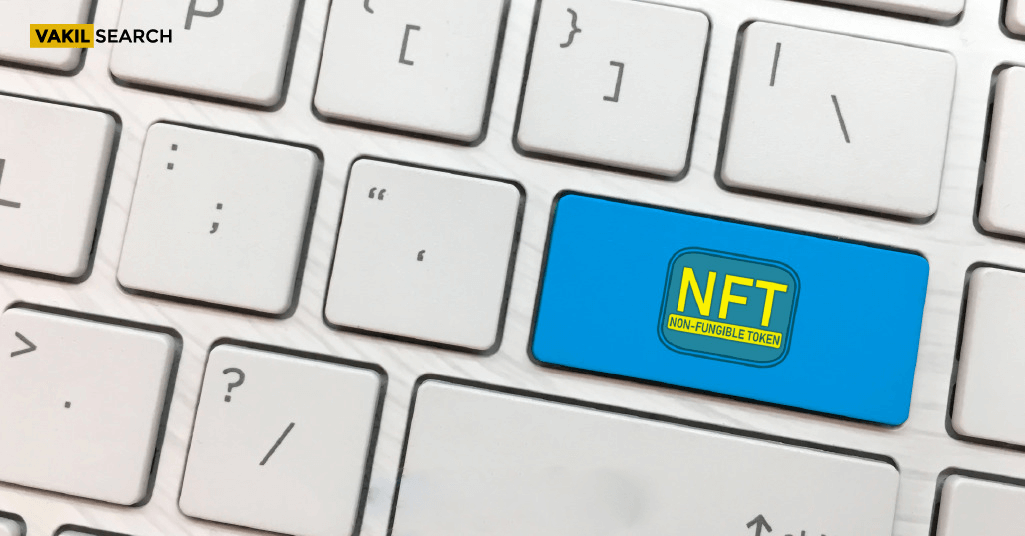Dive into the fascinating world of NFTs and uncover their significance in the digital market. Learn about NFTs, their workings, uses, and the future of this transformative technology.
Introduction
In this article, we’ll explore the meaning and significance of NFTs in the digital market. Understanding NFTs is crucial because they have revolutionized how we perceive and trade digital assets. NFTs are unique digital items that represent ownership or proof of authenticity for specific content. Unlike traditional cryptocurrencies, NFTs cannot be exchanged on an equal value basis. Each NFT possesses distinct properties that set it apart from other tokens. By gaining insights into NFTs, we can navigate this emerging digital landscape effectively and explore their transformative impact on various industries. Throughout this article, we’ll explore
into the workings of NFTs, discover how to purchase them, explore NFT marketplaces, and address frequently asked questions. By the end, you’ll have a comprehensive understanding of NFTs and their significance in the digital realm. Let’s embark on this exciting journey to unravel the mysteries of NFTs and unlock their vast possibilities.
What Are NFTs?
NFTs, or Non-Fungible Tokens, are a fascinating and innovative concept in the digital realm. Let’s break down the acronym and understand their significance.
Explanation of the acronym (Non-Fungible Tokens)
NFTs stand for Non-Fungible Tokens. The term “non-fungible” refers to something that cannot be replaced or exchanged on a one-to-one basis because it possesses unique attributes. In the world of cryptocurrencies, fungible tokens, like Bitcoin or Ethereum, are interchangeable and have the same value. However, NFTs are indivisible and represent one-of-a-kind items, making them distinct and irreplaceable.
Comparison With Traditional Cryptocurrencies
Unlike traditional cryptocurrencies, which are primarily used as a medium of exchange or a store of value, NFTs represent ownership or proof of authenticity for a particular item or piece of content. While cryptocurrencies like Bitcoin are fungible and can be exchanged for one another, NFTs have unique properties that make them different from one another, similar to physical collectibles or artwork.
Unique characteristics of NFTs NFTs have several unique characteristics that set them apart:
- Indivisibility: NFTs cannot be divided into smaller units. Each NFT represents a whole and cannot be broken down into smaller fractions.
- Authenticity and Ownership: NFTs utilize blockchain technology, which ensures the authenticity and provenance of the digital asset. The blockchain acts as a public ledger, recording the ownership history and providing proof of authenticity for the NFT.
- Immutable and Transparent: NFT transactions are recorded on the blockchain, making them immutable and transparent. This transparency allows anyone to verify the ownership and transaction history of an NFT.
- Diverse Use Cases: NFTs have found applications in various industries, including art, collectibles, virtual real estate, gaming, music, and more. They offer creators and artists new avenues for monetization and direct interaction with their audience.’
How Do NFTs Work?
NFTs operate on the underlying technology of blockchain, which plays a fundamental role in their functionality. Let’s explore how NFTs work and the key processes involved.
A. Blockchain technology and NFTs NFTs rely on blockchain technology, which is a decentralized and transparent digital ledger. Blockchain ensures the security, immutability, and authenticity of NFT transactions. By utilizing blockchain, NFTs address the issues of counterfeiting and ownership disputes that are prevalent in the digital world.
Creation and ownership of NFTs
- Creation: NFTs are created by artists, creators, or individuals using various platforms called NFT marketplaces. These marketplaces allow users to mint and tokenize their digital assets, transforming them into unique NFTs. The creation process involves uploading the digital file, specifying the ownership rights, and adding relevant metadata.
- Ownership: Once an NFT is created, it is assigned to a specific owner on the blockchain. The blockchain records and verifies the ownership history, making it publicly accessible. This transparent ownership information gives NFTs their unique value and provenance.
Tokenization process and metadata
- Tokenization: Tokenization is the process of converting a digital asset, such as artwork, music, or collectibles, into a digital token (NFT) on the blockchain. This tokenization process involves assigning a unique identifier to the asset and linking it to its metadata.
- Metadata: Metadata provides additional information about the NFT, such as the title, description, artist details, and other relevant attributes. It helps in identifying and describing the digital asset represented by the NFT. Additionally, metadata can include royalties, which entitle the creator to a percentage of future sales of the NFT.
By combining blockchain technology, the creation and ownership of NFTs, and the tokenization process with metadata, NFTs enable secure and verifiable ownership of unique digital assets. The transparency and authenticity provided by blockchain make NFTs highly desirable for collectors, investors, and artists alike.
Understanding the workings of NFTs and the processes involved is crucial for effectively participating in the NFT ecosystem, whether as a creator, collector, or investor. As we explore further, we’ll derive into the benefits, use cases, and potential challenges associated with NFTs in the digital landscape.
How to Buy NFTs
Open a crypto exchange account
To buy NFTs, you’ll first need to open an account on a cryptocurrency exchange that supports NFT transactions. Some popular exchanges include Coinbase, Binance, and Kraken. Sign up for an account, complete the necessary verification process, and ensure that the exchange supports the blockchain network used for the NFTs you wish to purchase.
Open a crypto wallet
Next, you’ll need a cryptocurrency wallet to securely store your NFTs. Different NFTs are typically associated with specific blockchain networks such as Ethereum or Binance Smart Chain. Choose a wallet compatible with the blockchain network you plan to use. Examples of popular wallets include MetaMask, Trust Wallet, and Ledger.
Transfer Ethereum into a crypto wallet
If you’re purchasing NFTs on the Ethereum blockchain, you’ll need to acquire Ethereum (ETH) and transfer it to your crypto wallet. Purchase Ethereum from your chosen cryptocurrency exchange and initiate a transfer to your wallet address. Make sure to follow the instructions provided by your wallet and double-check the accuracy of the wallet address to avoid any potential errors.
Buy NFTs
Once you have Ethereum in your wallet, you’re ready to buy NFTs. Visit an NFT marketplace that operates on the blockchain network of your choice. Some popular NFT marketplaces include OpenSea, Rarible, and NBA Top Shot. Explore the available NFTs, browse through various categories such as art, collectibles, or music, and select the NFT you wish to purchase. Each NFT will have its unique listing, including details, images, and the price set by the seller.
When you find an NFT you want to purchase, follow the instructions on the marketplace to initiate the transaction. Confirm the payment using your crypto wallet, and the NFT will be transferred to your wallet address upon completion. Ensure that you review the transaction details, such as gas fees (transaction costs) associated with the blockchain network, to avoid surprises during the purchase process.
Remember to exercise caution and do your due diligence when buying NFTs. Verify the authenticity of the NFT, review the seller’s reputation, and consider any additional terms or conditions associated with the purchase.
What is an NFT marketplace?
An NFT marketplace is an online platform where buyers and sellers can trade non-fungible tokens (NFTs). It serves as a digital marketplace specifically designed for the buying, selling, and auctioning of NFTs. NFT marketplaces provide a convenient and secure environment for users to engage in NFT transactions.
These marketplaces act as intermediaries, connecting creators and collectors, facilitating the listing of NFTs, and enabling the seamless exchange of digital assets. They offer a wide variety of NFTs across different categories such as art, collectibles, virtual real estate, music, videos, and more.
NFT marketplaces typically provide the following features and functionalities:
- Listing and Discovery: Sellers can list their NFTs for sale, including relevant details, images, and pricing. Buyers can browse through the available NFTs and discover new and exciting digital assets.
- Buying and Selling: Buyers can purchase NFTs directly from the marketplace using cryptocurrency, typically Ethereum or the native token of the blockchain network. Sellers can set the price for their NFTs, choose between fixed-price listings or auction formats, and receive payment upon successful transactions.
- Auctions and Bidding: Some marketplaces support auction-style sales, allowing buyers to bid on NFTs, with the highest bidder winning the item at the end of the auction period.
- Royalties and Secondary Sales: NFT marketplaces often have built-in royalty mechanisms, ensuring that creators receive a percentage of the proceeds when their NFTs are resold on the marketplace’s secondary market.
- Wallet Integration: NFT marketplaces integrate with popular cryptocurrency wallets like MetaMask, enabling users to connect their wallets for seamless transactions and secure storage of purchased NFTs.
Examples of well-known NFT marketplaces include OpenSea, Rarible, SuperRare, NBA Top Shot, and CryptoPunks. Each marketplace may have its own unique features, community, and selection of NFTs.
NFT marketplaces have played a crucial role in the rapid growth and adoption of NFTs by providing a platform for creators to monetize their digital assets and collectors to acquire unique pieces of digital content. They have opened up new avenues for artists, musicians, and creators to reach a global audience and directly engage with their fans and supporters.
When participating in NFT transactions through marketplaces, it is essential to conduct proper research, verify the authenticity and value of the NFTs, and consider any associated fees or terms before making a purchase.
Examples of NFT marketplaces
The NFT ecosystem has witnessed the emergence of several popular marketplaces that facilitate the buying, selling, and trading of non-fungible tokens. Here are some notable examples:
- OpenSea: OpenSea is one of the largest and most well-known NFT marketplaces. It supports a wide range of digital assets, including art, virtual real estate, collectibles, and more. Users can discover, buy, and sell NFTs directly on the platform.
- Rarible: Rarible is a decentralized NFT marketplace that allows creators to mint and sell their digital creations. It provides a platform for artists to showcase their work and engage with collectors. Users can also participate in auctions and create their own NFT collections.
- SuperRare: SuperRare focuses on digital art NFTs. It curates a collection of unique and limited-edition digital artworks created by renowned artists. Each artwork is tokenized as an NFT and can be bought, sold, and collected on the platform.
- NBA Top Shot: NBA Top Shot is an NFT marketplace created in partnership with the National Basketball Association (NBA) and the National Basketball Players Association (NBPA). It offers officially licensed NBA collectible highlights (moments) in the form of NFTs. Users can buy, sell, and trade these digital basketball moments.
- CryptoPunks: CryptoPunks is a pioneer in the NFT space, known for its collection of unique 10,000 algorithmically generated pixel art characters. Each CryptoPunk is a distinct NFT with varying attributes and rarity. The marketplace allows users to buy, sell, and trade these digital collectibles.
- Nifty Gateway: Nifty Gateway is an NFT marketplace that focuses on digital art and collectibles. It collaborates with artists, musicians, and brands to release limited-edition NFT drops. Users can purchase these NFTs directly from the platform.
- Foundation: Foundation is an invite-only NFT marketplace known for its curated selection of digital art. It emphasizes quality and originality, showcasing the works of renowned artists. Users can participate in auctions and acquire unique digital creations.
NFT scams
As the popularity of NFTs continues to rise, it is essential to be aware of potential scams and fraudulent activities that can occur within the NFT ecosystem. While NFTs offer exciting opportunities, it is important to exercise caution and be vigilant. Here are some common types of NFT scams to watch out for:
- Counterfeit NFTs: Counterfeit NFTs involve the creation and sale of fake or unauthorized copies of existing NFTs. Scammers may attempt to replicate popular artworks or digital collectibles to deceive buyers into purchasing fraudulent items. Always verify the authenticity and provenance of an NFT before making a purchase.
- Phishing Scams: Phishing scams aim to trick individuals into revealing their private keys or sensitive information by posing as legitimate NFT marketplaces or wallet providers. Scammers may send deceptive emails, messages, or create fake websites that resemble genuine platforms. Be cautious of any unsolicited communications and ensure you are interacting with official channels.
- Pump and Dump Schemes: In the world of NFTs, pump and dump schemes involve artificially inflating the price of a particular NFT by spreading false hype and speculation. Once the price reaches a peak, scammers sell their holdings, causing the value to plummet and resulting in significant losses for unsuspecting buyers. Exercise caution when considering NFTs that experience sudden and extreme price fluctuations.
- Fake NFT Marketplaces: Scammers may create fake NFT marketplaces that mimic legitimate platforms. These fraudulent websites aim to deceive users into depositing funds or purchasing NFTs that do not exist. Always double-check the authenticity and reputation of an NFT marketplace before engaging in transactions.
- Impersonation of Artists or Creators: Scammers may impersonate popular artists or creators, claiming to sell exclusive NFTs on their behalf. They may create fake social media accounts or websites to deceive buyers into purchasing unauthorized or counterfeit NFTs. Verify the authenticity of the artist or creator through official channels before making any purchases.
To protect yourself from NFT scams, consider the following precautions:
- Conduct thorough research on the NFT marketplace, artist, or creator before making a purchase.
- Verify the authenticity and provenance of the NFT by cross-referencing information with trusted sources.
- Use reputable and secure cryptocurrency wallets to store and manage your NFTs.
- Be cautious of unsolicited messages, emails, or links and avoid sharing sensitive information.
- Follow official social media accounts and websites of artists, creators, and NFT marketplaces to stay updated on their activities.
FAQs about NFTs
What does NFT stand for?
NFT stands for Non-Fungible Token. The term non-fungible refers to something that cannot be replaced or exchanged on a one-to-one basis because it possesses unique attributes. In the context of NFTs, they represent one-of-a-kind digital assets with distinct properties and ownership.
What is an example of an NFT?
An example of an NFT could be a digital artwork, such as a digital painting, a GIF, or a video clip. It could also be a virtual collectible, a piece of music, a virtual real estate property, or even a tweet. Essentially, any unique digital item that can be tokenized and represented on the blockchain as a non-fungible token can be considered an NFT.
Are NFTs cryptocurrency?
While NFTs exist within blockchain networks and are typically bought and sold using cryptocurrencies like Ethereum, they are not the same as traditional cryptocurrencies such as Bitcoin or Ethereum. NFTs represent ownership or proof of authenticity for specific digital assets, whereas cryptocurrencies are fungible digital currencies used for transactions and store of value.
What are NFTs used for?
NFTs have various use cases. They provide a means of proving ownership and authenticity for digital assets, allowing artists, creators, and collectors to monetize and trade their creations directly. NFTs have found applications in digital art, collectibles, gaming, virtual real estate, music, videos, and more. They offer new avenues for creators to connect with their audience, explore new revenue streams, and redefine ownership in the digital space.
What is NFT digital art, and how does NFT art work?
NFT digital art refers to artworks that are created and sold as NFTs. Artists can tokenize their digital artwork as an NFT, attaching ownership rights and provenance information to the token. NFT art can be bought, sold, and traded on NFT marketplaces using cryptocurrencies. The ownership of NFT art is recorded on the blockchain, providing transparency, traceability, and proof of authenticity for the digital artwork.









